Poseidon, the Greek god of the sea, is often depicted wielding a trident. This three-pronged spear is the most famous of Poseidon’s symbols and is often associated with his power over the sea and storms. According to Greek mythology, Poseidon used his trident to create earthquakes and control the waves.
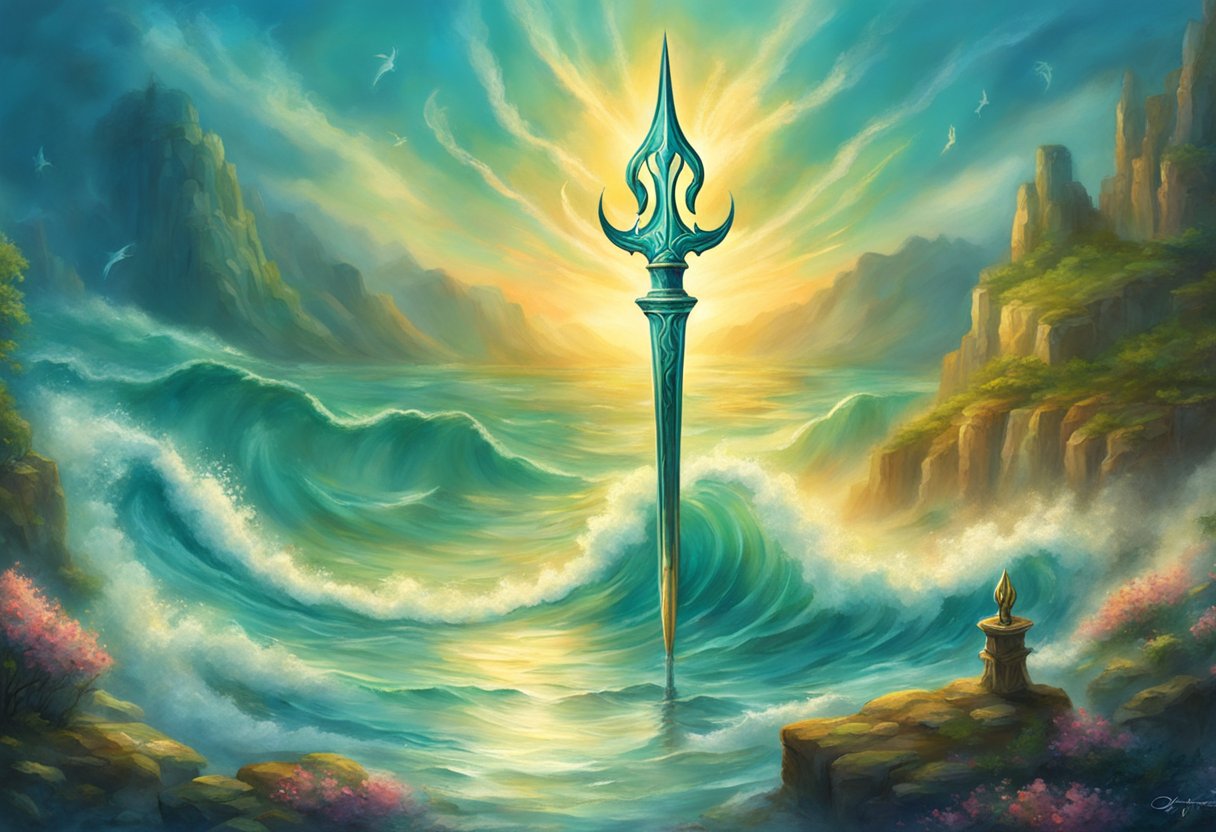
While the trident is Poseidon’s most recognizable symbol, it is not the only image associated with the god of the sea. Poseidon is also often depicted riding a chariot pulled by horses, which symbolizes his power over the creatures of the sea. Additionally, he is sometimes shown carrying a fish or dolphin, which are both animals associated with the ocean.
In Greek mythology, symbols were often used to represent the gods and their powers. Poseidon’s trident, horses, and sea creatures all symbolize his control over the sea and its inhabitants. Understanding these symbols is key to understanding the mythology and significance of Poseidon in ancient Greek culture.
The Trident
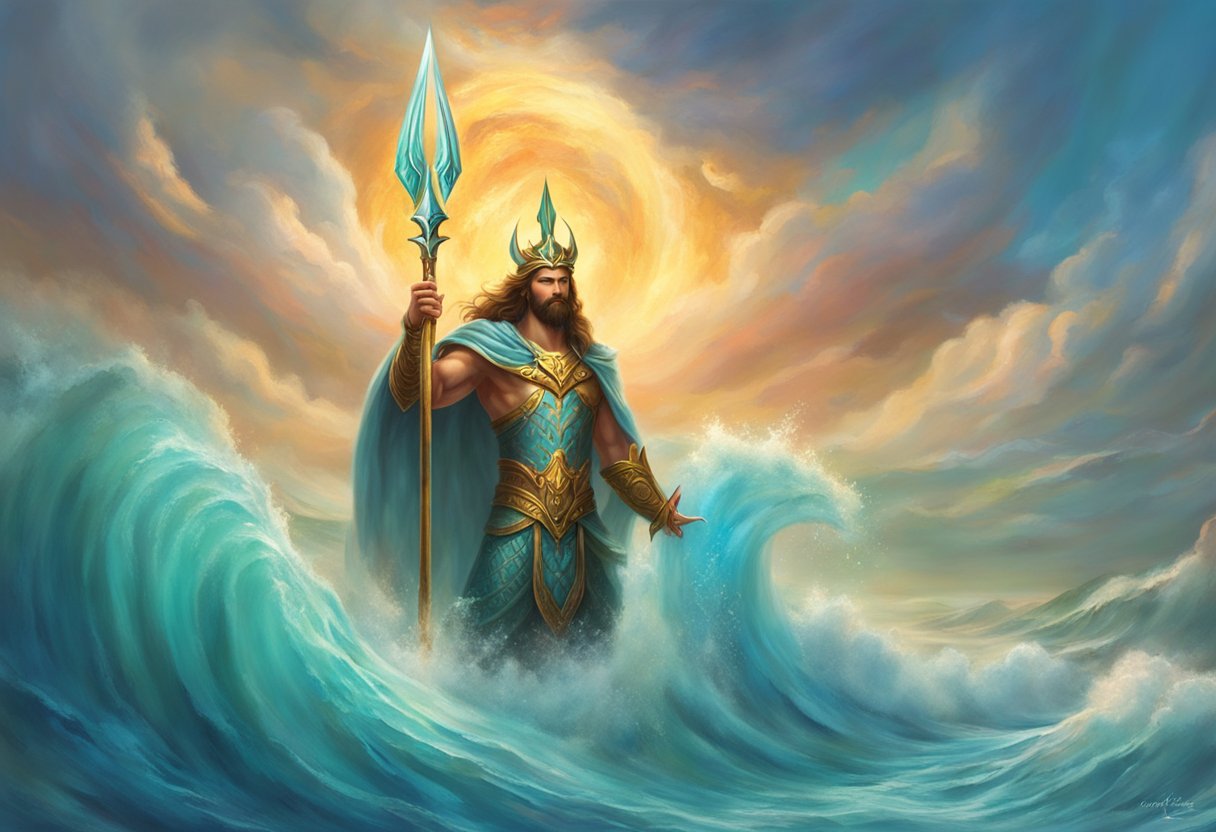
Poseidon, the Greek god of the sea, is known for his powerful trident. This three-pronged weapon is one of the most recognizable symbols of the god. The trident is a long rod with three prongs at the end, which are often depicted as sharp and pointed.
Symbolism of the Trident
The trident is a powerful symbol that represents the god’s dominion over the seas and water-related phenomena. It is said to have been forged by the three Cyclopes, just like Zeus’s thunderbolt and Hades’ helmet. The trident is also associated with power, strength, and authority.
In Greek mythology, Poseidon is often depicted holding his trident, which he uses to control the waves and create storms. The trident is also said to be a symbol of fertility and abundance, as it represents the three properties of water: liquidity, fecundity, and drinkability.
Historical Significance
The trident was not only a symbol of Poseidon’s power, but it also had a practical use. It was a common tool used by fishermen in coastal communities of Greece. The three prongs of the trident made it easier to catch fish, and it was also used as a weapon in battle.
The trident was also used as a symbol of power and authority by rulers and leaders throughout history. It was often depicted on coins and emblems, and it was used as a symbol of naval power by many ancient civilizations.
In conclusion, the trident is a powerful symbol that represents Poseidon’s dominion over the sea and water-related phenomena. It is a symbol of power, strength, and authority, and it has a practical use as a tool for fishing and as a weapon in battle.
Poseidon’s Animals
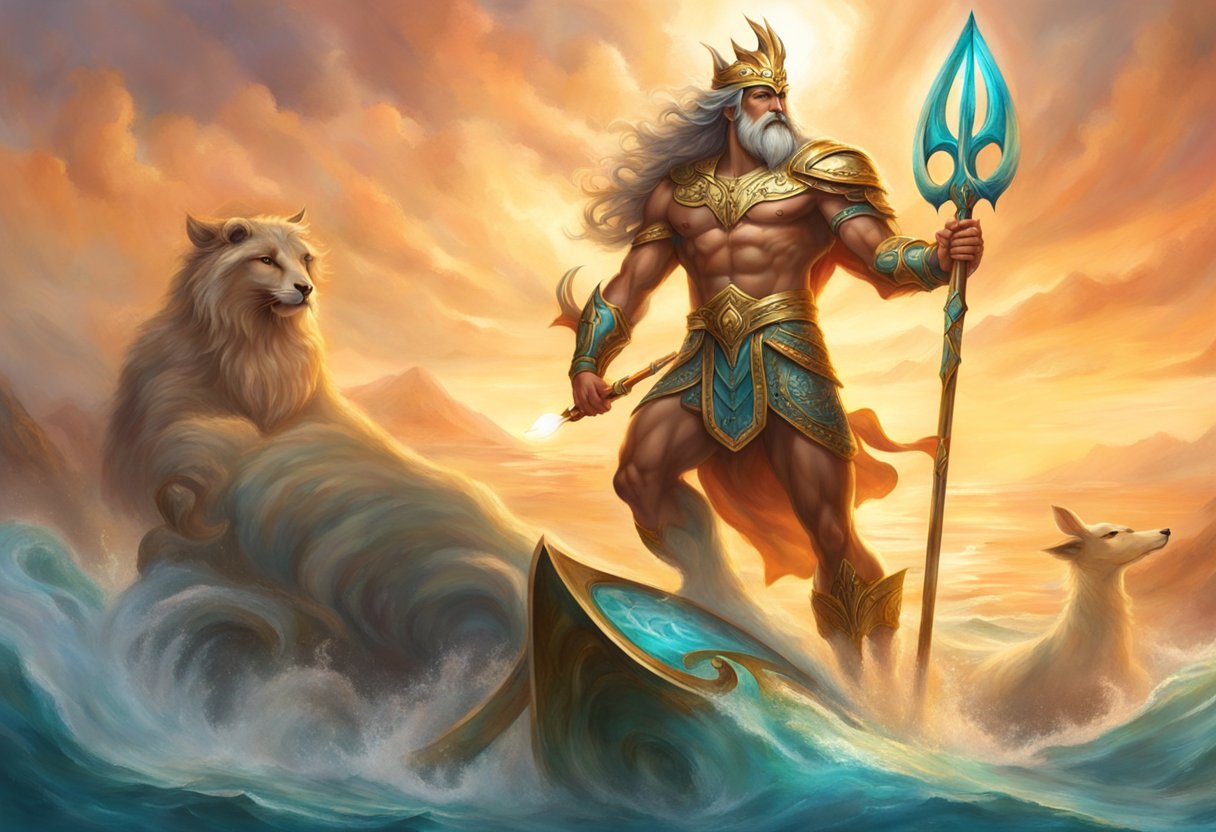
Poseidon, the Greek god of the sea, is often depicted with a variety of animals. These creatures are associated with the god’s domain and are believed to be under his protection.
Horses
Poseidon is often depicted riding on a chariot pulled by horses. In Greek mythology, he is the god of horses, and it is said that he created the first horse. The god is known to have a close relationship with these animals, and they are often used as a symbol of his power.
Dolphins
Dolphins are another animal that is closely associated with Poseidon. The god is often depicted riding on the backs of dolphins, and they are believed to be his messengers. Dolphins are also seen as a symbol of protection and good luck, and they are often used in art and literature to represent the god’s power.
Other Creatures
In addition to horses and dolphins, Poseidon is associated with a variety of other creatures. These include sea monsters such as the kraken and the sea serpent, as well as other sea creatures like seals and fish. These creatures are often used in art and literature to represent the god’s power and influence over the sea.
Overall, Poseidon’s animals are an important part of his mythology and are often used to symbolize his power and influence over the sea. Whether it’s horses, dolphins, or other sea creatures, these animals are an important part of the god’s mythology and continue to be used in art and literature to this day.
Poseidon’s Appearance
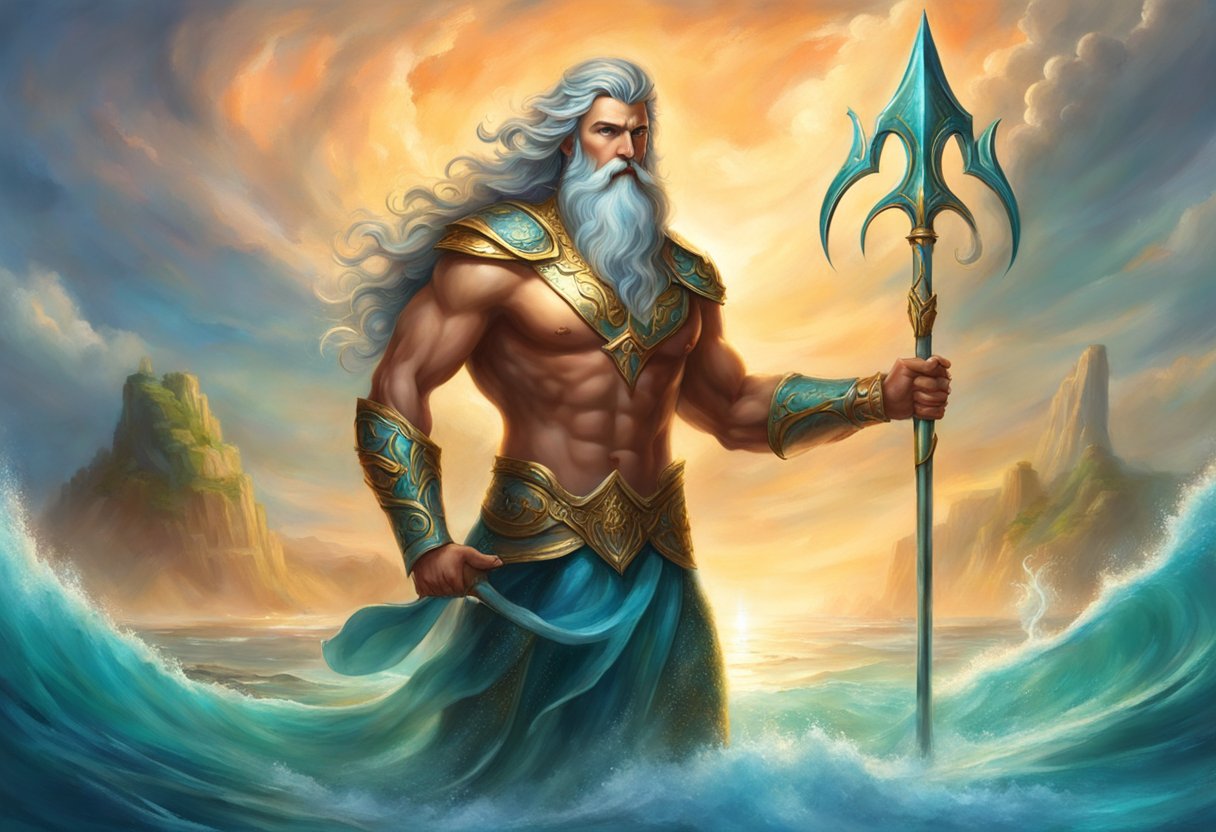
Iconography
Poseidon is often depicted as a mature and bearded man with a muscular build. He is usually shown holding a trident, which is his most recognizable symbol. The trident is a three-pronged spear that represents his power over the sea and his ability to cause earthquakes. In addition to the trident, Poseidon is also associated with horses and is sometimes shown riding a chariot pulled by these animals.
Depictions in Art
Poseidon has been depicted in various forms of art throughout history. In ancient Greek pottery, he is often shown with his trident and accompanied by sea creatures such as dolphins and fish. In sculpture, he is usually shown standing tall and holding his trident. Some depictions of Poseidon also show him with a crown made of seaweed or a fish tail in place of legs.
Overall, Poseidon’s appearance is characterized by his muscular build, beard, and trident. His association with horses and the sea is often represented in art through the use of sea creatures and chariots.
Cultural Impact
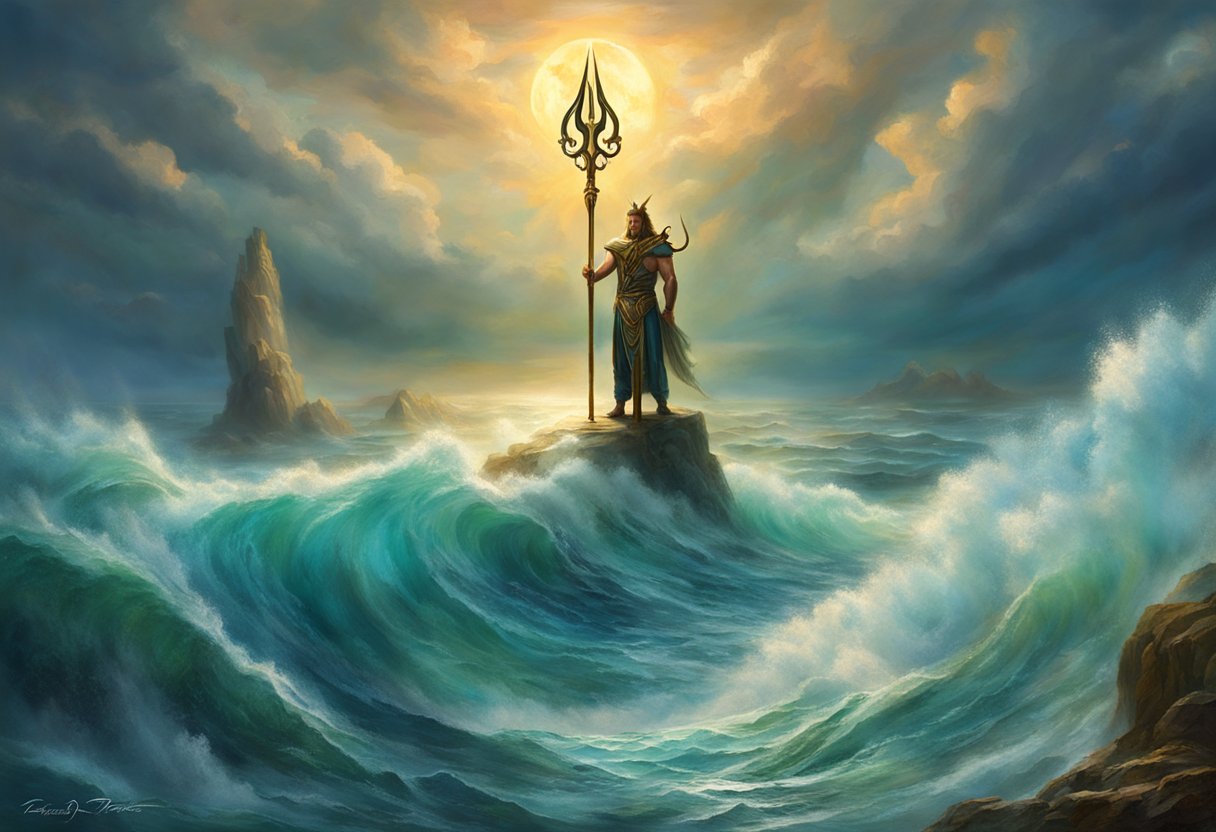
Influence on Literature
Poseidon’s symbol, the trident, has been a significant aspect of Greek mythology and literature. In Homer’s epic poem, the Iliad, Poseidon is depicted as a powerful god who uses his trident to create earthquakes and storms. The trident is also mentioned in several other ancient Greek texts, including Hesiod’s Theogony and Ovid’s Metamorphoses.
In modern literature, Poseidon’s symbol continues to play a significant role. In Rick Riordan’s Percy Jackson and the Olympians series, Poseidon’s trident is a central part of the story. The trident is also featured in other popular works of fiction, such as J.K. Rowling’s Harry Potter and the Goblet of Fire.
Representation in Media
Poseidon’s symbol has had a significant impact on popular culture. The trident is often used as a symbol of power and authority, and it has been featured in a wide range of media, including movies, television shows, and video games.
In the 2018 film Aquaman, the main character, played by Jason Momoa, wields a trident that is similar in appearance to Poseidon’s. The trident is also a prominent feature in the video game God of War III, where it is used as a weapon by the main character, Kratos.
Overall, Poseidon’s symbol has had a lasting impact on culture and continues to be a popular symbol of power and authority in modern media.
Worship of Poseidon
Temples and Shrines
Poseidon was one of the most revered gods in the Greek pantheon, and as such, he was worshipped in many temples and shrines throughout ancient Greece. Some of the most famous of these were located in Athens, Corinth, and other major cities.
In Athens, the Temple of Poseidon was located on the Acropolis, and it was one of the most important religious centers in the city. The temple was built in the 5th century BCE, and it was dedicated to Poseidon as the god of the sea and earthquakes.
In Corinth, the Temple of Poseidon was located on the isthmus that connected the Peloponnese to the rest of Greece. The temple was built in the 6th century BCE, and it was dedicated to Poseidon as the god of the sea and horses.
Rituals and Festivities
The worship of Poseidon was accompanied by a variety of rituals and festivities. One of the most important of these was the festival of the Isthmian Games, which were held every two years at the Temple of Poseidon in Corinth.
During the festival, athletes from all over Greece competed in a variety of events, including foot races, horse races, and wrestling matches. The festival was dedicated to Poseidon as the god of horses and the sea.
Another important ritual associated with the worship of Poseidon was the offering of sacrifices. These sacrifices were typically made at temples and shrines dedicated to the god, and they were intended to appease him and ensure the safety of seafarers.
Overall, the worship of Poseidon was an important part of ancient Greek religion and culture. His symbols, such as the trident and the dolphin, were widely recognized and revered, and his temples and shrines were some of the most important religious centers in the ancient world.
